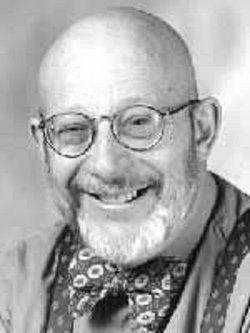Nationality American Parents Martin Dobelle Name William Dobelle | Children 3 Spouse(s) Claire Dobelle | |
 | ||
Education | ||
Dr. William Harvey "Bill" Dobelle (October 24, 1941 – October 5, 2004) was a biomedical researcher who developed experimental technologies that restored limited sight to blind patients, and also known for the impact he and his company had on the breathing pacemaker industry with the development of the only FDA approved device for phrenic nerve pacing. He was the former director of the Division of Artificial Organs at the Columbia-Presbyterian Medical Center.
Contents
Education
Dobelle was the son of Martin Dobelle and Lillian Mendelsohn Dobelle, born on October 24, 1941. William's younger brother Evan Dobelle is a politician and educator. The son of an orthopedic surgeon, Dobelle designed improvements for the artificial hip while still in high school, for which he received several patents. He started college the following year at Vanderbilt. At 15, he won the State of Florida science fair for construction of an original concept X-ray machine, and later moved on to win the National Science Fair. He earned his bachelor's and master's degrees in biophysics at Johns Hopkins University where he worked on the development of medical tests. He finished his Ph.D. in neurophysiology at the University of Utah. Throughout his youth, he frequently took time off from his studies to explore other areas of interest. Two of his most notable expeditions were to South America, one of which was responsible for tracking the original route of Vasco Núñez de Balboa. In his youth, Dobelle had briefly worked on a whaling boat and as a Porsche mechanic.
Career and artificial vision
Dobelle was the CEO of the Dobelle Institute, headquartered in Lisbon, Portugal, which concentrates on artificial vision for the blind.
He was associate director of the Institute of Biological Engineering at the University of Utah and director of the Division of Artificial Organs at the Columbia-Presbyterian Medical Center. He was a founding fellow of the American Institute for Medical and Biological Engineering. He was also inducted as a Founding Fellow of the American Institute for Medical and Biological Engineering in 1993. Throughout his career, he worked closely with friend and mentor Willem Johan Kolff.
He bought Avery Laboratories (now Avery Biomedical Devices) in 1983, where he worked on neurostimulation and the artificial eye. Dobelle led one of several teams of scientists around the world seeking to develop technology for artificial vision. Dobelles' teams developed a brain implant which films the visual field in front of the patient and transmits it to the brain's visual cortex, allowing the patient to see outlines. He received widespread publicity on January 17, 2000, when it was announced that a patient known as "Jerry", blind after a blow to his head 36 years previous, had regained his ability see thanks to the artificial eye Dobelle had spent over 30 years developing. Jerry "sees" by wearing spectacles attached to a miniature camera and an ultrasonic rangefinder. They feed signals to a computer worn on the waistband, which processes the video and distance data, which is then sent by another computer to 68 platinum electrodes implanted in Jerry's brain, on the surface of the visual cortex. He sees a simple display of dots that outline an object. Jerry's vision is the same as a severely shortsighted person - equivalent to 20/400. He is able to read two-inch letters at five feet. The Dobelle Eye has been experimented in several people, allowing individuals who were once completely blind to see the outlines of images in the form of white dots on a black background. In 2002, 38-year-old Jens Naumann, a blind man, was able to use the device to drive a car at the 48th annual American Society for Artificial Internal Organs conference. Cheri Robertson, a 41-year-old woman who was also implanted with the system, was profiled in the documentary "Extraordinary People" in 2008.
He married Claire Dobelle in the 1980s. They had three children: Martin, Molly and Mimi.
Portable breathing pacemaker
Dobelle's Avery Biomedical Devices also created the portable breathing pacemaker, which has been used by patients with quadriplegia, central apnea, and other respiratory ailments.
